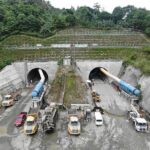The UK has witnessed an unprecedented fire wave in the first four months of 2025, with at least 111 major blazes reported since January 1—well up on earlier years. The fires have torched large swathes of countryside, endangered properties, and taxed emergency services, sparking concerns about the increasing effect of climate change and extreme weather.
Key Facts About the 2025 Wildfire Surge
1. Record-Breaking Figures
111+ fires recorded by firefighting authorities—twice the usual number for the same timeframe in previous years.
Regions hardest hit: Scotland, Wales, and south England (including designated national parks such as the New Forest and Peak District).
Fires lasted several days, with military deployment necessary.
2. Causes & Contributing Factors
Unseasonably dry, warm conditions (attributable to climate change).
High winds carrying fire quickly.
Human activity: Campfires, discarded cigarettes, and even alleged arson in a few instances.
3. Impact & Response
Evacuations: Hundreds of people made homeless in Cornwall, Yorkshire, and the Scottish Highlands.
Ecological damage: Threatened rare habitats and wildlife (e.g., heathlands, nesting birds).
Firefighting challenges: France and Ireland sent crews to help overwhelmed UK crews.
Why This Is Alarming
Climate link: The UK’s meteorological office (Met Office) warns of growing wildfire threats from hotter, drier summers.
Resource strain: Fire services worry budgets can’t keep pace with mounting disasters.
International trend: In the wake of record wildfires in Europe (2024) and Canada’s catastrophic 2023 season.
What’s Being Done?
Prevention initiatives (i.e., public prohibitions on disposable barbecues in risky areas).
Spending on firefighting technology(drones, AI wildfire forecasting models).
Policy reform demands: Tighter land management and quicker climate adjustment proposals.
What’s Next?
As summer 2025 looms near, the experts caution the worst is yet to come. Pressure mounts on the UK government to increase emergency funding and ramp up net-zero policies in order to check long-term risks.









